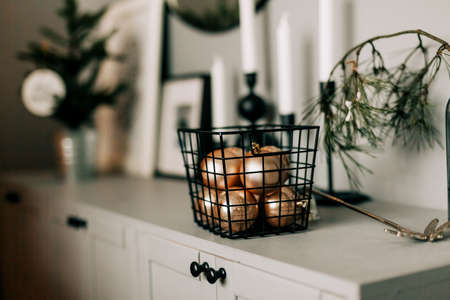Introduction: Contemporary British Kitchens Rooted in History
The modern British kitchen stands as a testament to the nation’s rich architectural and cultural heritage, skilfully blending contemporary design with the enduring charm of Victorian and Georgian eras. This unique fusion not only elevates the visual appeal of today’s kitchens but also pays homage to centuries-old traditions that have shaped domestic life across the UK. In recent years, homeowners and designers alike have increasingly sought to reinterpret classic features—such as ornate cornicing, sash windows, and intricate mouldings—within sleek, functional layouts tailored for 21st-century living. By weaving together the elegance of historical detailing with innovative materials and technology, British kitchens achieve a sense of timelessness that resonates with both nostalgia and modernity. This approach creates spaces that are not only practical and efficient but also imbued with character, setting the tone for a distinctly British reinterpretation of home cooking and gathering spaces.
2. The Hallmarks of Victorian and Georgian Kitchen Aesthetics
When reimagining modern British kitchens with a respectful nod to Victorian and Georgian heritage, understanding the distinctive design hallmarks of these eras is essential. Both styles have shaped the nation’s domestic interiors, offering a rich palette of aesthetic cues that continue to inspire contemporary renovations across the UK.
Victorian and Georgian Design Elements: A Comparative Overview
| Feature | Georgian Era (1714-1837) | Victorian Era (1837-1901) |
|---|---|---|
| Cabinetry Style | Panelled doors, often painted in muted tones; focus on symmetry | Shaker cabinetry, more ornate mouldings, painted or stained finishes |
| Fixtures & Fittings | Simplicity in ironmongery; understated brass or iron handles | Cast iron fixtures, decorative knobs, and elaborate hinges |
| Wall Treatments | Wood panelling up to dado height; pastel or neutral colour palettes | Full-height panelled walls, often painted deep greens or blues; patterned tiles introduced later in era |
| Worktops & Surfaces | Smooth wooden surfaces or stone slabs; minimal adornment | Breadboards, marble, or slate worktops with slightly more decorative edges |
| Lighting & Accents | Candles and lanterns; glass pendant shades emerging late era | Gas lighting initially, followed by early electric fittings; etched glass or stained glass accents |
The Enduring Influence on Today’s Kitchens
The timeless influence of these historic periods is evident in many modern British kitchens. Shaker cabinetry—originally celebrated for its utility and clean lines—has become a staple in both traditional and contemporary homes. Cast iron fixtures, such as range cookers and statement taps, are frequently specified for their durability and period charm. Panelled walls, whether half-height or full-height, evoke a sense of architectural permanence while providing opportunities for bold colour contrasts or subtle elegance.
Practical Applications in Modern Remodelling
Tapping into these historic elements allows homeowners to blend the best of both worlds: contemporary functionality paired with classic aesthetics. For example, integrated appliances can be discreetly housed behind shaker-style doors, while original cast iron features can be refurbished and retained as centrepieces. These choices not only preserve character but also satisfy the expectations of a discerning British clientele who value heritage as much as innovation.

3. Reimagining Heritage: Modern Materials, Classic Silhouettes
In today’s British homes, the kitchen stands as a testament to both heritage and innovation. Homeowners are increasingly opting to reinterpret the distinct silhouettes of Victorian and Georgian eras—think high corniced ceilings, panelled cabinetry, and ornate mouldings—by employing modern materials and finishes that cater to contemporary lifestyles. While traditional kitchens often relied on solid woods and hand-painted surfaces, the modern remodelling approach sees the introduction of engineered quartz worktops, matt-finished laminates, and hardwearing composite flooring that echo the elegance of their historical counterparts yet offer superior durability and ease of maintenance.
Visual elegance is carefully balanced with everyday practicality. For example, shaker-style cabinetry, deeply rooted in British tradition, is now frequently crafted from moisture-resistant MDF and finished in soft-touch lacquers for a clean look that withstands the rigours of daily use. Meanwhile, classic butler sinks may be paired with sleek chrome mixer taps rather than antiqued brassware, providing a subtle nod to history while meeting present-day expectations for functionality and hygiene.
Open shelving—a hallmark of Georgian sculleries—has been reinterpreted using powder-coated steel or tempered glass, allowing for both display and easy cleaning. Even colour palettes have evolved: muted sage greens, navy blues, and off-whites reminiscent of period homes are recreated using eco-friendly paints with washable finishes. The result is a kitchen space that feels unmistakably British in its heritage inspiration yet remains firmly grounded in 21st-century living requirements.
4. Functional Design: Marrying Heritage Details with Modern Innovation
In the pursuit of remodelling a modern British kitchen that pays homage to its Victorian and Georgian roots, functional design takes centre stage. The art lies in integrating state-of-the-art appliances, innovative lighting solutions, and intelligent storage options, all whilst preserving the authenticity of heritage aesthetics. This seamless blend ensures the kitchen remains both a practical space for contemporary living and a tribute to architectural history.
Modern Appliances Discreetly Incorporated
The key challenge is incorporating advanced appliances—such as induction hobs, built-in ovens, and integrated refrigeration—without disrupting period charm. Many homeowners opt for cabinetry that conceals modern equipment behind classic panelled doors or within bespoke alcoves. For example, retro-styled range cookers can act as statement pieces, echoing Victorian cast iron ranges, while offering present-day efficiency.
Lighting: Bridging Past and Present
Victorian and Georgian kitchens relied on natural light and candle sconces; today’s designs emulate this ambience through layered lighting schemes. Pendant lights in aged brass or wrought iron add historical character above islands or breakfast nooks. Recessed LED lighting under cabinetry provides discreet task illumination, maintaining clean lines and subtlety.
| Element | Heritage Inspiration | Modern Innovation |
|---|---|---|
| Appliances | Freestanding ranges | Integrated smart ovens & hobs |
| Lighting | Candle sconces & pendant lanterns | LED strips & dimmable pendants |
| Storage | Larders & dressers | Pulldown racks & corner carousels |
Intelligent Storage Solutions for Contemporary Lifestyles
While Victorian larders and Georgian dressers offered generous storage, today’s families demand even greater efficiency. Clever innovations such as soft-close drawers, pull-out pantries, and hidden recycling bins are now essential. These features can be framed by traditional joinery details—beaded panels, cornices, and mouldings—ensuring practicality does not compromise style.
Legal Considerations in Kitchen Remodelling
If your property is listed or located within a conservation area—a frequent scenario with period homes in Britain—planning permissions may restrict alterations. It is prudent to consult local planning authorities and review leasehold agreements to ensure compliant integration of modern fixtures within heritage settings.
Summary: A Cohesive Blend for Modern Living
The successful marriage of heritage details with contemporary conveniences defines the modern British kitchen. Through thoughtful design choices, one can enjoy twenty-first-century comfort while honouring the characterful legacy of Victorian and Georgian eras.
5. Sourcing and Sustainability: Local Craftsmanship and Bespoke Solutions
In the pursuit of modern British kitchens that pay homage to Victorian and Georgian heritage, sourcing and sustainability take centre stage. There is an increasing appreciation for supporting British artisans whose expertise in traditional joinery and cabinetry ensures authenticity and a connection to our collective past. By choosing locally sourced materials—be it English oak, Welsh slate, or hand-thrown tiles from Staffordshire—homeowners contribute not only to the local economy but also to reducing their environmental footprint.
The Value of Local Artisans
Bespoke joinery, crafted by skilled tradespeople, remains a hallmark of period-inspired kitchens. Commissioning made-to-measure cabinetry or freestanding larders tailored to your space is more than a stylistic choice; it is an investment in longevity and quality. Artisans steeped in regional traditions understand the nuances of classic detailing—be it a Georgian cornice or a Victorian panelled door—ensuring each element is both functional and historically sympathetic.
Longevity Through Quality Materials
Sustainability is intrinsically linked to durability. Opting for robust hardwoods, time-honoured finishes, and responsibly sourced stone means your kitchen will stand the test of time, both structurally and aesthetically. This approach reduces the need for frequent replacements, reinforcing the Victorian and Georgian ethos of building for generations rather than seasons.
Celebrating Authenticity in Every Detail
A truly modern British kitchen with heritage at its core finds beauty in provenance and process. Whether working with a local blacksmith for ironmongery or commissioning bespoke glasswork from a regional studio, every detail becomes part of the home’s unique story. In doing so, homeowners not only preserve traditional crafts but also create spaces imbued with genuine character—kitchens that are as sustainable as they are stylish.
6. Legal Considerations: Renovating Period Properties in the UK
Embarking on a kitchen remodelling project within a period property—particularly one with Victorian or Georgian heritage—requires careful attention to the UK’s legal landscape. The charm of these historic homes is protected by a robust framework of regulations, and failure to comply can result in costly delays, fines, or even the need to reverse works. Below, we outline the primary legal considerations relevant to modern British kitchens that respect their illustrious past.
Planning Permission: Navigating Local Authority Controls
Any significant alterations to period properties may require planning permission from your local authority. While internal changes such as kitchen remodelling are often permitted under “permitted development” rights for freehold houses, these rights can be restricted for properties in conservation areas or those that have been previously extended. For flats, maisonettes, or homes in designated areas, always check with your local planning department before commencing works.
Listed Building Consent: Preserving Historical Significance
If your property is listed—Grade I, II*, or II—you must obtain listed building consent for any alterations that might affect its character. This includes kitchen upgrades that involve removing or altering original features such as cornicing, fireplaces, joinery, or even wall layouts. It’s essential to liaise closely with your local conservation officer and to engage architects or contractors experienced in sympathetic restoration.
Leasehold Restrictions: Understanding Your Lease
For leasehold properties, the lease will typically set out what you can and cannot do regarding internal alterations. Many leases require you to seek landlord (freeholder) consent before undertaking substantial works, including remodelling the kitchen. Breaching lease terms could result in legal disputes or demands for reinstatement at your own cost. Always review your lease carefully and communicate transparently with your managing agent or freeholder.
Building Regulations: Ensuring Compliance and Safety
Regardless of planning status, all kitchen renovations must comply with current Building Regulations. This includes standards relating to electrical safety (Part P), ventilation, fire protection, drainage, and structural integrity. Notifying Building Control and obtaining completion certificates provides assurance that works meet statutory requirements—crucial for future sales or insurance purposes.
Party Wall Agreements: Shared Structures
If your works impact a shared wall (such as installing new venting through an external wall adjoining a neighbour), you may be required to serve notice under the Party Wall Act 1996. Early engagement with neighbours and clear documentation can help prevent disputes and keep your project on schedule.
Conclusion: Professional Guidance Is Key
The intersection of heritage protection and modern living makes legal compliance non-negotiable when remodelling kitchens in Victorian or Georgian homes. Engage professionals familiar with period property law and consult local authorities early in the process to ensure your stunning new kitchen not only meets your lifestyle needs but also honours its legal obligations—and the legacy of British architectural history.


